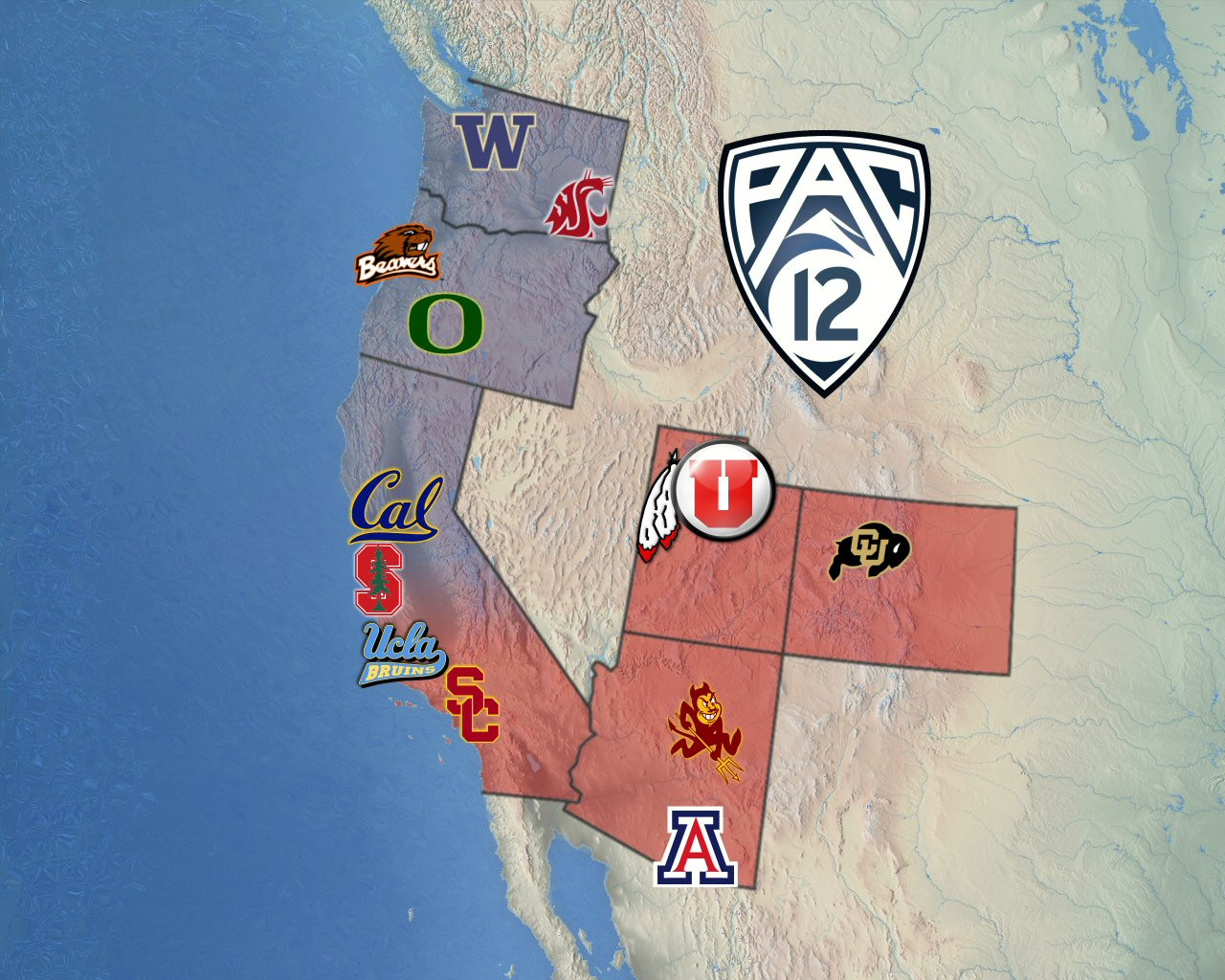Seemingly overnight, the Pac-12 Conference went from just two teams to six teams as conference realignment continues to send shock waves through the world of college athletics. Early Thursday morning, the Pac-12 announced the addition of four Mountain West schools to the conference: Boise State, Colorado State, Fresno State, and San Diego State, which will officially take effect on July 1, 2026. Competition will begin for all conference sports in the 2026-27 academic year. The addition of these schools does not come without obstacles and penalties, as the Cougs and Beaves are still operating as members of the Pac-12 Conference under the NCAA’s two-year grace period. The Commissioner of the conference expressed her excitement for the additions while they eagerly await 2026. “For over a century, the Pac-12 Conference has been recognized as a leading brand in intercollegiate athletics,” Commissioner Teresa Gould stated. “I am thankful to our board for their efforts to welcome Boise State University, Colorado State University, Fresno, and San Diego State University to the conference. An exciting new era for the Pac-12 Conference begins today.” The Presidents of Washington State University and Oregon State University also released a joint statement welcoming the teams, saying they “eagerly anticipate their uniquely insightful contributions during this transformative era for the conference and collegiate athletics.” While the Pac-12 and departing Mountain West schools shared their excitement for the news, the Mountain West released a statement of a more serious tone. “All members will be held to the Conference bylaws & policies should they elect to depart,” the Mountain West said when reports of the news began to leak Wednesday night. “The requirements of the scheduling agreement will apply to the Pac-12 should they admit Mountain West members. Our Board of Directors is meeting to determine our next steps. The Mountain West has a proud 25-year history & will continue to thrive in the years ahead.” The departing Mountain West schools will also not be able to exit the conference without penalty. The Mountain West bylaws require departing schools to pay an exit fee of roughly $18 million with two years' notice, which is what the four schools expect to pay, a source told ESPN. That number would jump to $36 million with one year's notice. ESPN says, “the Pac-12 is expected to be in position to help the schools with the exit fees, in part, due to withheld media-rights distribution fees to departed members and other conference assets.” The Pac-12 would also be subjected to $43 million in poaching fees, as outlined in the scheduling agreement that allowed WSU and OSU to play six football games against Mountain West schools for the 2024 season. Now, with the four teams joining the Pac-12, there is sure to be a ripple effect of more conference realignment. Forming the Pac-12 into a six team conference is a huge step in rebuilding the conference that has been around for more than a century, but it doesn't sound like they are done adding schools yet. “The collective six universities will collaboratively chart additional membership and other future conference considerations,” the Pac-12 Conference said in a release. The Pac-12 still needs to add two more schools to reach the NCAA minimum requirement. If the new-look Pac-12 can’t get to at least eight schools by the start of the 2026 school year, it will lose its status as an FBS conference. On the other hand, if the Pac-12 does get to eight schools by the deadline, the Pac-12 champion may regain an automatic spot in the 12-team College Football Playoff in 2026, Ross Dellenger of Yahoo Sports reported. Looking ahead: Following the Apple Cup against Washington this Saturday, and hosting San Jose State the following weekend, Wazzu will meet its first future conference opponent for the first time, playing the Boise State Broncos on Sept. 28 at Albertsons Stadium. Outside of football, the West Coast Conference and Pac-12 came to a scheduling agreement in all sports other than football and baseball, but it's unclear if any WCC schools will be joining the Pac-12 in the future. This round of conference realignment has a lot of moving parts, with factors such as what other schools will be added, what media-rights deals could come from this move, and what does this mean for the Mountain West moving forward, but at this time, all of those questions remain unanswered and unclear. This is a developing story, further details will be added as they become available. ## Realignment Rationale: The Pac-12’s decision to expand and add these four Mountain West schools comes at a pivotal time for college athletics as a whole. The landscape of college sports has changed drastically in recent years, driven by factors like the rise of the College Football Playoff, the increasing importance of television contracts, and the growing power of the Big Ten and SEC conferences. This has led to a wave of conference realignment as schools seek to maximize their financial opportunities and athletic competitiveness. The Pac-12’s expansion is a strategic move to strengthen its position in this evolving landscape. The addition of Boise State, Colorado State, Fresno State, and San Diego State will provide the Pac-12 with several key advantages: * Increased geographic footprint: The expansion will extend the Pac-12's reach into the Mountain West region, giving the conference a more diverse geographic footprint and potentially opening up new markets for media rights deals. * Strong football programs: The four new schools are known for their strong football programs, which will add depth and competitiveness to the Pac-12. * Increased athletic competitiveness: The addition of these schools will make the Pac-12 a more competitive conference overall, which could lead to increased national recognition and media attention. * Potential for future expansion: The addition of these schools could serve as a springboard for further expansion in the future, allowing the Pac-12 to build a more formidable conference that can compete with the Big Ten and SEC. The expansion is likely to have a significant impact on the Mountain West Conference, which will lose some of its most prominent schools and successful football programs. However, it is still unclear what the future holds for the Mountain West and how the conference will adapt to this significant loss of membership. ## What’s Next for the Pac-12 The Pac-12 has signaled its intention to continue its expansion and reach the NCAA minimum of eight schools by the start of the 2026 school year. The conference has already begun discussions with several potential candidates, including Tulane, Memphis, and UTSA. The addition of these schools would provide the Pac-12 with a stronger geographic footprint, increased athletic competitiveness, and a more compelling narrative for future media rights deals. However, the Pac-12 will face challenges in securing the commitment of these schools, particularly given the significant exit fees involved. The Pac-12 is also facing pressure to secure a new media rights deal, which could be crucial to the conference’s long-term success. The conference’s current deal with ESPN and Fox expires in 2024, and there is uncertainty about whether the Pac-12 will be able to secure a deal that is comparable to those of other major conferences. The Pac-12’s expansion is a bold move that could signal the start of a new era for the conference. However, the conference still faces a number of challenges, including securing new media rights deals and attracting additional members. The next few years will be crucial for the Pac-12 as it seeks to establish its place in the evolving landscape of college athletics. ## A New Era of Competition The Pac-12’s expansion is a significant development in the ongoing saga of conference realignment in college athletics. The conference has taken a bold step to secure its future, but it remains to be seen whether this move will be enough to propel the Pac-12 back into the ranks of the nation’s elite conferences. Only time will tell if the Pac-12's expansion will be a success, but one thing is certain: The landscape of college sports is changing rapidly, and the Pac-12 is making its move to stay ahead of the curve. ## A New Era of Opportunity The Pac-12’s expansion is a testament to the conference’s commitment to its member institutions and student-athletes. The conference is taking a proactive approach to ensure its future success, and this expansion is a clear signal of its determination to compete with the nation’s best conferences. The Pac-12 has a long and storied history, and it has shown a remarkable ability to adapt to change. The conference’s expansion is a bold step that could usher in a new era of success for the Pac-12, and it will be exciting to see how the conference develops in the coming years.
Luca Rossi
Environmental Reporter
Reporting on environmental issues and sustainability.

















